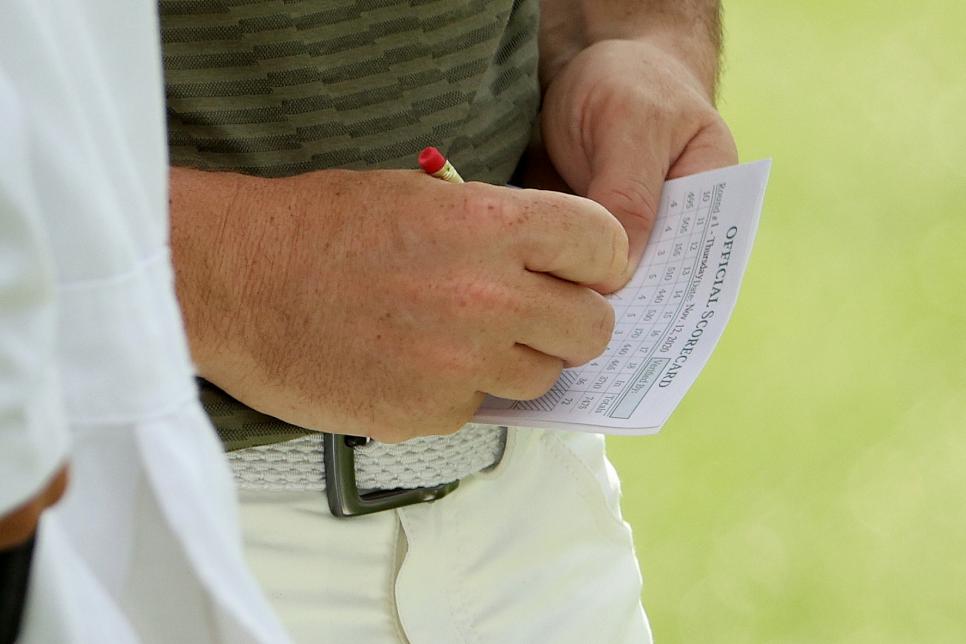Rules of Golf
Forgetting to sign your scorecard may not be so costly anymore with the 2023 Rules of Golf update

Patrick Smith
You hear it happen every so often, not frequently enough to call it common but not infrequently enough to call it rare. Still, each time a golfer forgets to sign a scorecard—and is subsequently disqualified from a tournament—the reaction that follows is twofold: How could that possible happen (again)? And why are they hit with a DQ?
It's the second question that the USGA and R&A have decided to experiment with in creating Model Local Rule L-1, which reduces the penalty for players who fail to sign their card (certify their score in rules parlance) from disqualification to two strokes added to the last hole of the round.
The Model Local Rule will be available to tournament committees to put in play for their events when the new edition of the Rules of Golf goes into effect Jan. 1, 2023. It comes about thanks in part to input from the PGA Tour, LPGA and representatives from other pro circuits.
“There has been a lot of interest in this area from the professional game, and this is a local rule we expect them to adopt,” said Craig Winter, USGA senior director Rules of Golf and Amateur Status. “We expect most organizations at the highest level, those organizations that have hard cards, permanent rules staffs … it’s likely we’re going to see this throughout the game at that level.”
Winter described the MLR as an extension of the USGA and R&A becoming more lenient regarding scorecard mishaps. In recent years, penalties for players signing a wrong scorecard have been reduced if they unknowingly committed a penalty and thus signed for a score lower than they shot. (Before 2016, this resulted as well in a DQ, and after 2018 a local rule eliminated the two-stroke penalty still found in the Rules.)
The Rules of Golf still specify that you must have the correct score for each hole written on your scorecard. Sign for a score higher than what you shot, and the higher score becomes your new official score. Sign for a score lower than you shot, and you remain disqualified.
As for failing to sign a scorecard, why a Model Local Rule rather than a full-fledged change to the Rules of Golf? Winter says the USGA and R&A don’t want to force committees to makes changes, but instead would like to use the next four years to evaluate its impact.
“We have four years effectively to see how it goes,” Winter said. “We can make a decision come 2027 if this becomes the rule of golf and perhaps there’s a local rule that says if a committee wants to be where we are with disqualification today, they can choose that option for a local rule. But this is pretty normal path forward for us in these areas. Local rule first, see how it goes and perhaps move it into the rules if it works out well for the game.”
Indeed, it’s not just pro golf where the Model Local Rule may have a significant impact. “Unfortunately, it happens even as much as organizations try to put someone in the scoring area to help prevent that. It does [still] happen,” Winter said of unsigned scorecards. “Club level golf, with a little less attention to the scoring area, it probably happens a little more often too.”